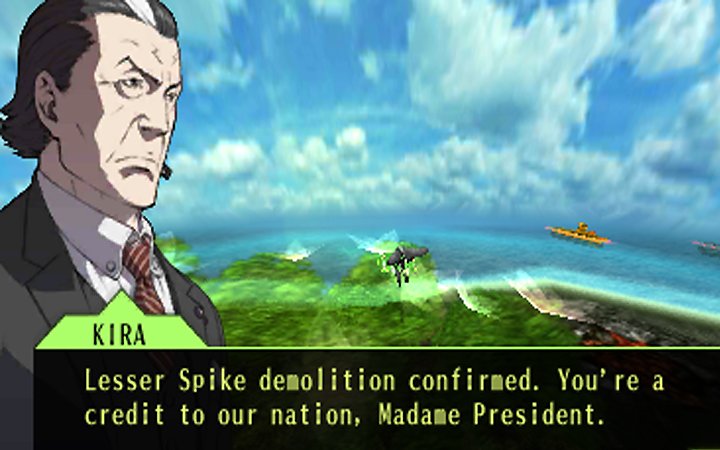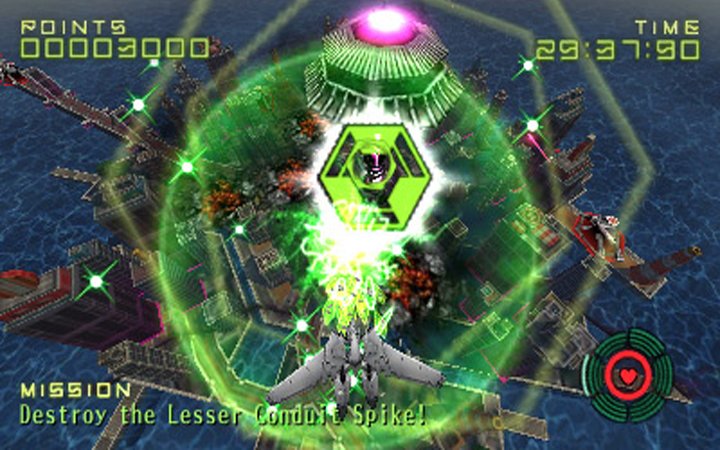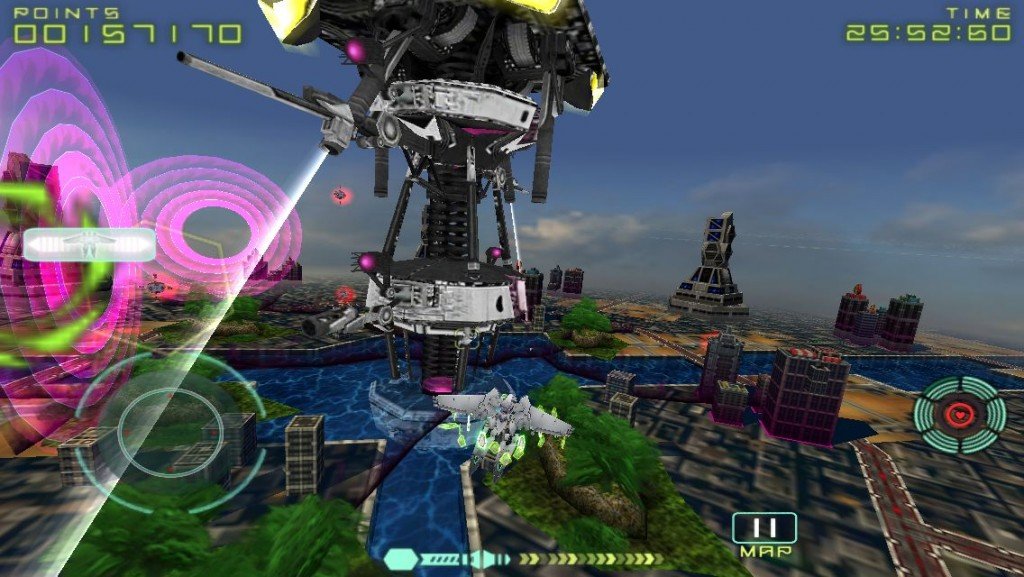One would think that Japanese developers would have action games featuring giant robots down to a science by now; an Anime staple for decades, many of the most renowned series have involved humans piloting various kinds of ass-kicking mecha, from the long-running Gundam series to the worldwide hit Neon Genesis Evangelion.
And yet, the majority of giant robot games released are of such poor quality that they fail to reach the level of the most mediocre of licensed titles in the West; only Hideo Kojima’s Zone of the Enders series has come close to replicating the thrill of piloting a high-flying, laser-spamming war machine, but even now, the constant pleading from fans has yet to result in a third entry. And while the Super Robot Wars series favors fan service over enriching gameplay, the licensing nightmare regarding such a crossover has kept the series exclusive to Japan (with the exception of the OG games, which feature entirely original robot designs).
This is why Liberation Maiden, a joint collaboration between Level-5 and Suda51, is such a welcome sight. As part of the Guild-01 compilation, in which three game designers (and one comedian) each create an original game for the 3DS, Liberation Maiden kicks off the four-game contract with a premise combining nearly everything that makes Anime robots both ludicrous and awesome: high school girls-turned-presidents, skintight outfits, aliens polluting the environment, and lots and lots of lasers.
In the (not very) near future, Japan is now known as “New Japan” and is currently at war with an alien-like nation known as “The Dominion”. Newly elected president Shoko Ozora starts off her presidential term combating the forces of The Dominion with her one-man fighting machine, Kamui. The entire story is summed up in one over-the-top Anime intro featuring lots of explosions, harrowing speeches, and convenient camera angles centered on Shoko’s shapely derriere. The game itself features fully-voiced cut-scenes interspersed between missions, but the majority of the dialogue centers around what you need to blow up next, so don’t expect a gripping narrative, or even a proper explanation as to what The Dominion actually is.
Each stage takes place from a 3D overhead view, where players control Shoko controlling Kamui, who must fly around and destroy specific targets on the map. The main targets are called “Lesser Spikes”, which act as towers that power the barrier field protecting the “Greater Spike” (aka the Stage Boss). Destroying each Lesser Spike will eventually open the path to the boss, but expect heavy resistance guarding each of the Spikes, ready to shoot down any robot that comes their way. Once a Spike is dealt with, the surrounding area will return to its natural beautiful state, featuring lush gardens and blue waters, much like the land restoration seen in Okami, except instead of a Wolf Goddess purifying the land with magic, it’s a high school president using lasers. Somehow, the former makes more sense.
As for the controls to said laser shootouts, anyone who has played Kid Icraus: Uprising will find the control scheme immediately familiar. The circle pad is used to move the mecha around in every direction, while holding down the left bumper and the circle pad simultaneously will cause Kamui to steer in a fixed position, which is essential for targeting enemies and dodging their attacks. The stylus is used to move the targeting reticule in order to lock-on to multiple enemies (think Panzer Dragoon), and moving the stylus away from the screen allows Kamui to fire lasers at all locked-on targets. Take caution not to overdo it with the lock-on attacks, as each fired laser will decrease your energy shield. The good news is that you also gain shield energy for every destroyed enemy, but wasting all your lasers on an opponent that won’t go down will turn your flying death-machine into the equivalent of a Transformers toy about to get chewed up by your pet dog. Worse still is that every time you sustain damage, you must wait a few moments before your energy recharges (meaning you can’t fight back).
This back-and-forth battle between offense and defense adds an extra dose of thrill to Liberation Maiden, which is further offset by the dozens of missiles, bombs, and other incendiary weapons tossed your way. The controls are easy to learn and the stylus allows for smooth lock-on gameplay. The one major downside is the incredibly short run-time: just as the stakes start to pile up, the game ends on an abrupt note similar to Halo 2’s infamous cut-off point. At only five stages, the entirety of Liberation Maiden can be played through in just a couple of hours, while the self-titled Stage Attack merely consists of replaying each level, cutscenes and all. The unlockable gallery doesn’t offer much extra incentive for those uninterested in the world-building information contained within, and the game only offers two weapon types and a screen-filling sword attack that’s like firing a nuke right out of your blade once you’ve gained enough energy.
As brisk as the experience may be, the price is right for the action, and the game oozes a style that is typical of all of Suda51’s games. The absurd premise of purifying lands and teenage presidents is played wholly straight, to the point that it becomes endearing. Hopefully, Shoko will be allowed to serve another presidential term that allows for a longer gameplay experience, as well as new toys to play around with.
This review is based on a review copy of the Nintendo 3DS version of Liberation Maiden developed by Level-5 and Suda51
- Excellent Sense of Style
- Over-the-Top Premise
- Incredibly Short Run-Time
- Very Little Replay Value

